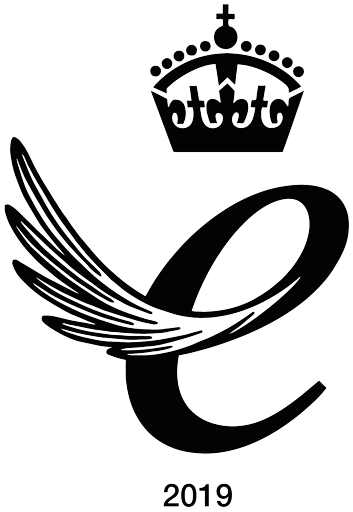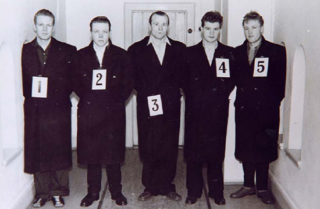Trouble at the Top
It is easy to think the threat to your security is outside your door. When it comes to fraud, 52% of crime is committed by people on the inside according to a survey by PwC. Worryingly, a disproportionate number of those are in middle to senior management positions; and the number of businesses behaving badly, especially in banking, is cause for concern says the Fraud Advisory Panel charity.
Trusting people (especially those with fiduciary responsibilities) to do the right thing is a vital ingredient in any successful team. How then, however, do you know what to look for to identify someone who could present a risk? Well, in recently published research scientists have worked out that people have a dark core to their personality.
What’s more, a General Dark Factor of Personality (D-factor) exists that can tell the extent of a person’s dark traits, which cause questionable ethical, moral and social behaviour.
A team of researchers from Germany and Denmark apparently defined the D-factor as “the basic tendency to maximize one’s own utility at the expense of others, accompanied by beliefs that serve as justifications for one’s malevolent behaviours.”
Drawing upon existing psychological literature the scientists identified what they described as the nine traits of malevolence. These are described below.
The 9 Traits of Malevolence:
These are the 9 traits comprising the D-factor, along with the definitions used by the scientists:
- Egoism: “the excessive concern with one’s own pleasure or advantage at the expense of community well-being.”
- Machiavellianism: “manipulativeness, callous affect, and a strategic-calculating orientation.”
- Moral disengagement: “a generalized cognitive orientation to the world that differentiates individuals’ thinking in a way that powerfully affects unethical behaviour.”
- Narcissism: “ego-reinforcement is the all-consuming motive.”
- Psychological entitlement: “a stable and pervasive sense that one deserves more and is entitled to more than others.”
- Psychopathy: “deficits in affect (i.e., callousness) and self-control (i.e., impulsivity).”
- Sadism: “a person who humiliates others, shows a longstanding pattern of cruel or demeaning behaviour to others, or intentionally inflicts physical, sexual, or psychological pain or suffering on others in order to assert power and dominance or for pleasure and enjoyment.”
- Self-interest: “the pursuit of gains in socially valued domains, including material goods, social status, recognition, academic or occupational achievement, and happiness.”
- Spitefulness: “a preference that would harm another but that would also entail harm to oneself. This harm could be social, financial, physical, or an inconvenience.”
Is D for Dark or Determined?
To help understand how the personality of senior leaders can impact on an organisation, it is interesting to consider how these nine traits might manifest themselves or influence modern leadership. Indeed it is instructive to first look back into history and consider the leadership qualities of past industrialists, politicians, financiers and military chiefs and to see how these traits of malevolence influenced them.
Sadly, traits such as egoism, self-interest, spitefulness and psychopathy have been all too obvious in some high-profile leaders in the past. Personality characteristics which often showed early fruit as the leadership ambitions of the individual developed but ultimately led to disillusionment, embitterment and professional failure.
We might consider the great William Morris, Lord Nuffield, who created a magnificent car-manufacturing empire, but which foolishly began to focus on the manufacture of large but ponderous saloons. Morris thought the production of MG sports cars an irritating and pointless endeavour. It is ironic to think that the brand name ‘MG’ is the only vestige of his long gone empire that is still in existence today.
Or the once unassailable Lord Charles Forte, who created a global catering business from a London milk bar, only to see it snatched away from him when hubris caused him to over-expand and fail to innovate.
The financial markets have been the land of opportunity for the talented for centuries and have produced both heroes and villains. One infamous egotist even gave his name to a product. In the 1920s boom, the charismatic American Charles Ponzi duped investors by exaggerating the margin on the purchase and sale of discounted postal coupons. Investors leapt at the promise of 50% returns, unaware that Ponzi was paying dividends to early investors. Ponzi made over $10m before being discovered.
And military history is littered with examples of men (yes, predictably all men) who overtly displayed at least some if not all of the traits of malevolence. We only have to consider the US General Joseph Stilwell, “Vinegar Joe” who was only too happy to blame failure on subordinates and colleagues, or General Douglas MacArthur whose belief in his own infallibility eventually led to his summary dismissal by President Truman.
The character of these men contrasts starkly with those other great wartime leaders Winston Churchill and Franklin Roosevelt, both men who were painfully aware of their own limitations and who always sought advice and counsel from people with more knowledge and expertise than they could claim to possess. And yet they too possessed personality traits that many would find unacceptable.
What to Look Out for
But what of today’s leaders; do any of them demonstrate the dreaded 9 traits of malevolence? Can we think of a recent prime minister whose ego and narcissism eventually led to a spectacular downfall and to widespread public contempt? Can we spot any of those corrosive traits in the current US leadership? Do we observe any pattern of behaviour in today’s political strongmen; Putin, Erdogan, Jong-un that might be reflective of those 9 key traits?
Closer to home, have you seen any of the 9 traits in business leaders, professionals who are in positions of trust or colleagues you do business with? And if so, what does it mean?
Perhaps the key question to ask is; do successful and enduring leaders in public life and the corporate world always have susceptibility for those dark traits of malevolence? And can adequate procedures be put in place to minimise risk and ensure that people with those traits don’t engage in unethical conduct, especially when temptation calls?
The optimists among us would say there are very few people in organisations that have the complete D-factor and a robust Code of Ethics and effective HR, fraud and compliance procedures will identify individuals that present a serious risk. Consequently, the risk of another international Ponzi or repeat of the sub-prime mortgage scandal linked to the derivatives bubble and collateralised debt obligations (CDO’s), that sparked the global financial crisis of 2008 is mitigated.
But in truth, however hard we look it is difficult to identify a current world leader or giant of industry who does not display at least some tendency towards, at the very least one or two of those notorious nine! Identifying an individual with the full D-factor who is close to home can be just as hard and controls to maintain ethical standards must be rock solid if they are to prevent the frauds of the future.
Dr Tim Parsons is an academic, an advisor to the United Nations on ethical policing and a former British police chief inspector. He has designed and delivered personal development programs for leaders in 20 countries across Europe, Africa, North America and the Middle East. He has published various works on democratic policing and the role of community policing in counter-terrorism operations.

